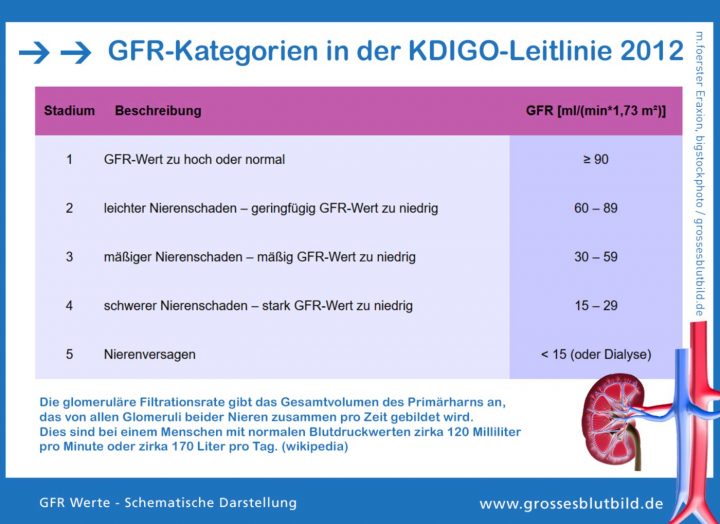Regulation Of Gfr : What it is
The regulation of glomerular filtration rate (GFR) is a crucial process that ensures the kidneys function properly and maintain homeostasis in the body. GFR refers to the rate at which blood is filtered by the glomeruli in the kidney's nephrons, playing a vital role in waste removal, fluid balance, and maintaining optimal blood pressure. Understanding the factors that regulate GFR is essential for comprehending kidney function and its impact on overall health.
1. The Importance of GFR Regulation
GFR regulation is crucial for maintaining the body's overall fluid balance and waste elimination. It ensures that waste products, toxins, and excess fluids are adequately eliminated, preventing their buildup in the bloodstream and potential damage to other organs. Additionally, GFR regulation helps maintain ideal blood pressure levels, as the kidneys filter out excess fluids to prevent hypertension.

The image above illustrates the complex mechanisms involved in GFR regulation.
2. Autoregulation via Myogenic Mechanism
One of the key mechanisms involved in GFR regulation is autoregulation through the myogenic mechanism. The myogenic mechanism allows the kidney to maintain a relatively constant GFR despite changes in blood pressure, ensuring that filtration remains optimal.

The image above represents the myogenic mechanism, which helps regulate GFR.
3. Hormonal Regulation of GFR
In addition to autoregulation, hormonal influences also play a significant role in GFR regulation. Hormones like angiotensin II and atrial natriuretic peptide (ANP) have a direct impact on the constriction or relaxation of blood vessels in the kidneys, affecting GFR.
Angiotensin II, for example, promotes vasoconstriction in the renal arterioles, reducing GFR and facilitating water and sodium reabsorption to maintain fluid balance. Conversely, ANP promotes vasodilation, increasing GFR and enhancing the excretion of sodium and water from the body.
FAQs
1. What happens if GFR is too low?
If GFR is too low, it indicates compromised kidney function, which can lead to the accumulation of waste products and fluid retention. This condition, known as renal failure, can have severe consequences for overall health and often requires medical intervention.
2. Can GFR be improved?
In some cases, GFR can be improved through lifestyle changes and medical interventions. Managing underlying conditions such as diabetes and hypertension, adopting a healthy diet, maintaining regular physical activity, and following prescribed medications can help improve GFR.
3. What factors can affect GFR?
Several factors can influence GFR, including blood pressure, blood volume, kidney diseases or infections, medications, and even certain medical procedures. It's essential to monitor and maintain healthy levels of these factors to support optimal GFR.
In conclusion, understanding the regulation of GFR is vital for comprehending kidney function and its impact on overall health. Autoregulation mechanisms, such as the myogenic mechanism and hormonal influences, play a significant role in maintaining a constant GFR. By ensuring optimal GFR, the kidneys effectively eliminate waste products, maintain fluid balance, and support overall well-being.
Disclaimer: The information provided in this article is for educational purposes only and should not replace professional medical advice. Please consult with a healthcare professional for personalized guidance on your specific condition.
Ch 26 Urinary System - Hormonal Regulation Of Glomerular Filtration
 Image Source : quizlet.com
Image Source : quizlet.com Renal System: Extrinsic GFR Regulation: Renin Angiotensin System | Draw
 Image Source : www.drawittoknowit.com
Image Source : www.drawittoknowit.com Gfr-Wert Zu Niedrig Oder Erhöht (Glomeruläre Filtrationsrate Bei
 Image Source : kinderbilder.download
Image Source : kinderbilder.download Regulation Of GFR
 Image Source : studylib.net
Image Source : studylib.net Physiology: Extrinsic GFR Regulation: Sympathetic Nervous System | Draw
 Image Source : www.drawittoknowit.com
Image Source : www.drawittoknowit.com gfr regulation extrinsic sympathetic renal draw system know nervous mechanisms
Regulation Of GFR: Autoregulation Via Myogenic Mechanism Myogenic
 Image Source : www.youtube.com
Image Source : www.youtube.com myogenic autoregulation gfr regulation
Renal System: Intrinsic Mechanisms Of GFR Regulation | Draw It To Know It
 Image Source : www.drawittoknowit.com
Image Source : www.drawittoknowit.com Glomerular Filtration Rate Units / Kidney Water Filtration Rate
 Image Source : roisadel123.blogspot.com
Image Source : roisadel123.blogspot.com gfr filtration glomerular inulin insulin determined injecting physiology
Myogenic autoregulation gfr regulation. Gfr-wert zu niedrig oder erhöht (glomeruläre filtrationsrate bei. Renal system: intrinsic mechanisms of gfr regulation. Gfr filtration glomerular inulin insulin determined injecting physiology. Regulation of gfr